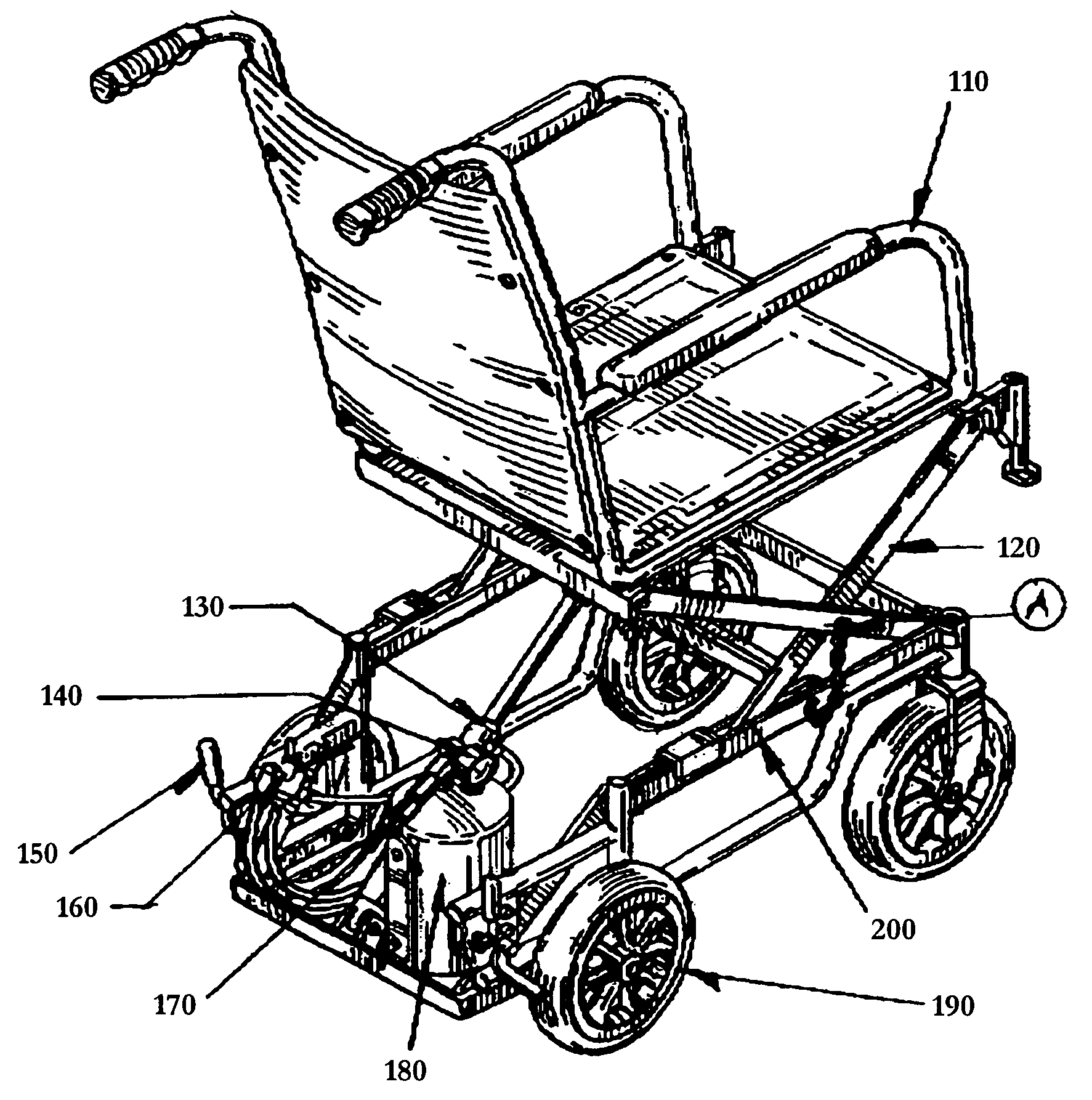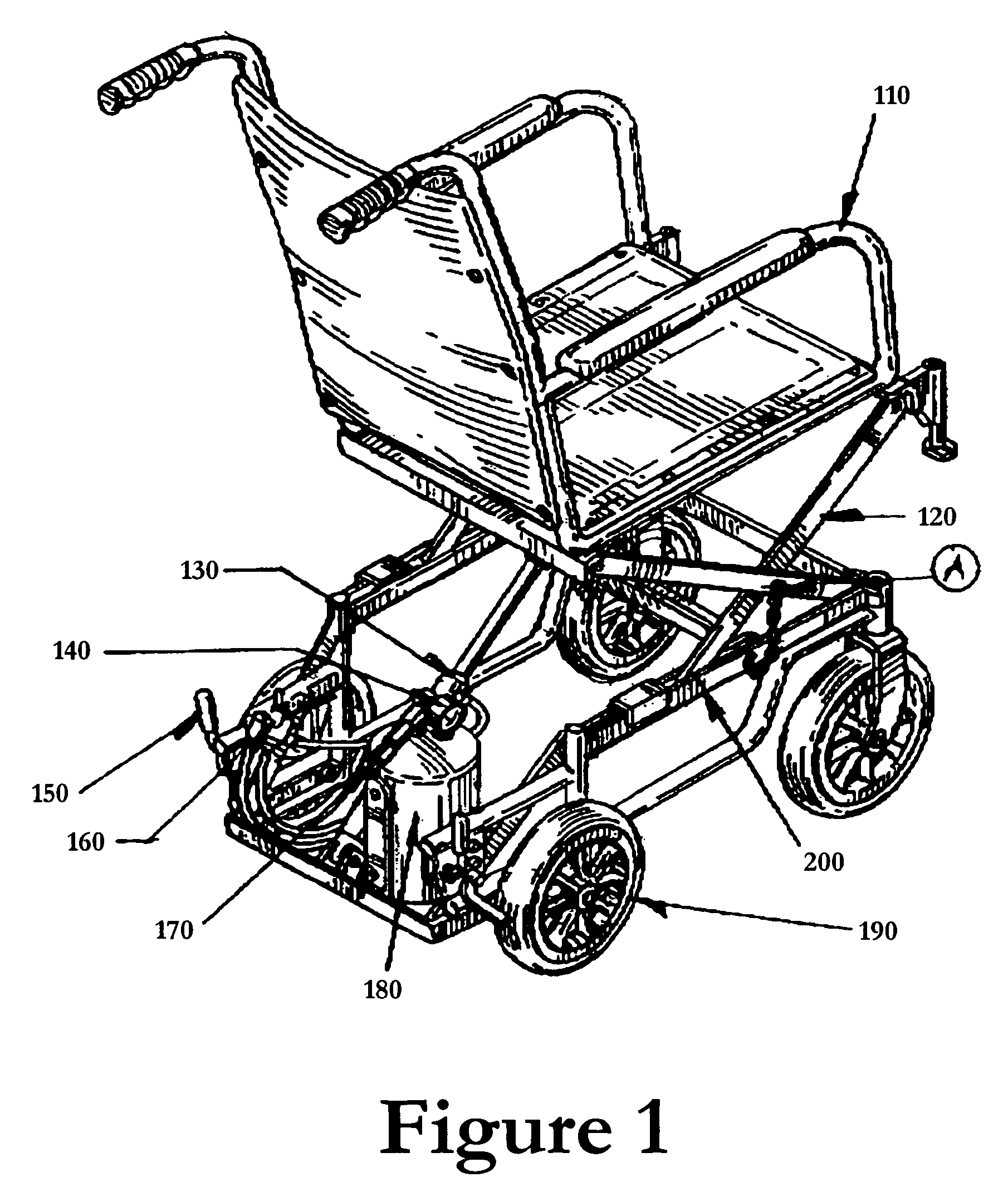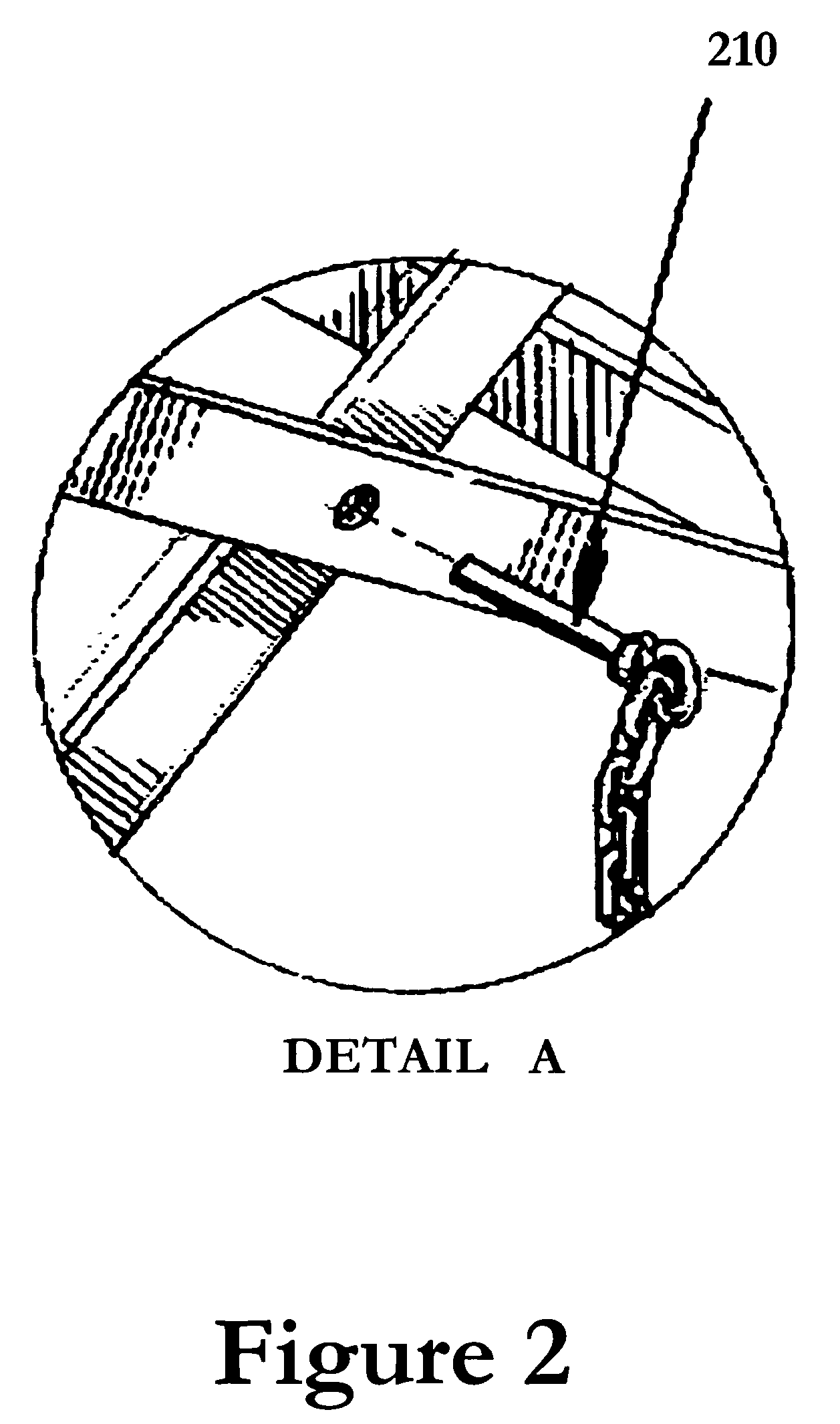Low-high chair
a low-high chair and chair technology, applied in the field of wheelchairs, can solve the problems of poor comfort, easy accidental bumping of the head, and the inability to adjust the height of the wheelchair user, and achieve the effect of greater convenience and better view
- Summary
- Abstract
- Description
- Claims
- Application Information
AI Technical Summary
Benefits of technology
Problems solved by technology
Method used
Image
Examples
Embodiment Construction
[0022]FIG. 1 is a rear perspective view of the high-low chair of the present invention. Note that for purposes of illustration, the chair 110 of FIG. 1 is illustrated as a four-wheel wheel chair of the type typically designed to be pushed by others. However, other wheel chair types such as the traditional large wheel chair, designed to be self-propelled, may be used. The apparatus of the present invention may also be applied to other types of chairs, such as powered chairs and the like. However the primary objective of the present invention is to provide the adjustable height feature at a minimum cost and weight, and thus it is primarily intended for use in simpler chair designs.
[0023]Chair 110 includes wheels 190, which as noted above may comprise four smaller wheels, including two castor wheels, or may include two castor wheels and two self-driven larger wheels intended to be driven by the user. As is typical with prior art wheelchairs, chair 110 may include locking brake levers 1...
PUM
 Login to View More
Login to View More Abstract
Description
Claims
Application Information
 Login to View More
Login to View More - R&D
- Intellectual Property
- Life Sciences
- Materials
- Tech Scout
- Unparalleled Data Quality
- Higher Quality Content
- 60% Fewer Hallucinations
Browse by: Latest US Patents, China's latest patents, Technical Efficacy Thesaurus, Application Domain, Technology Topic, Popular Technical Reports.
© 2025 PatSnap. All rights reserved.Legal|Privacy policy|Modern Slavery Act Transparency Statement|Sitemap|About US| Contact US: help@patsnap.com



